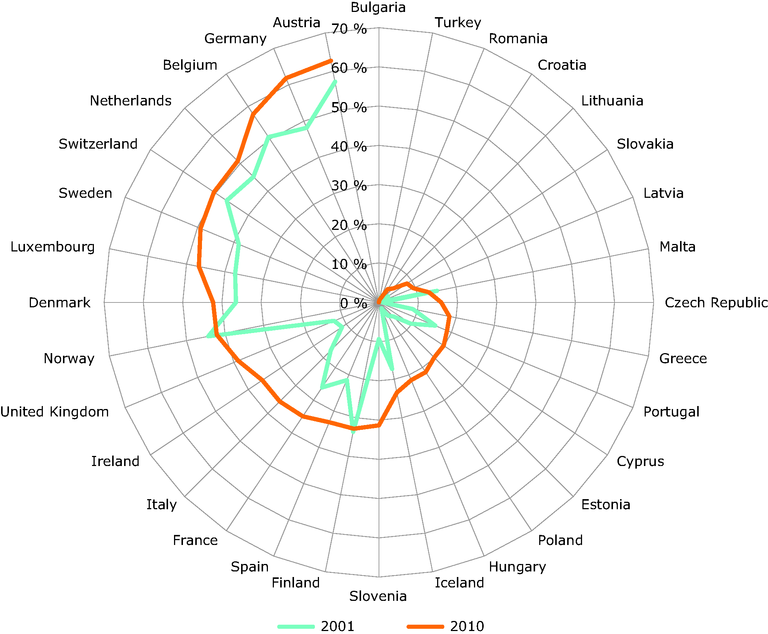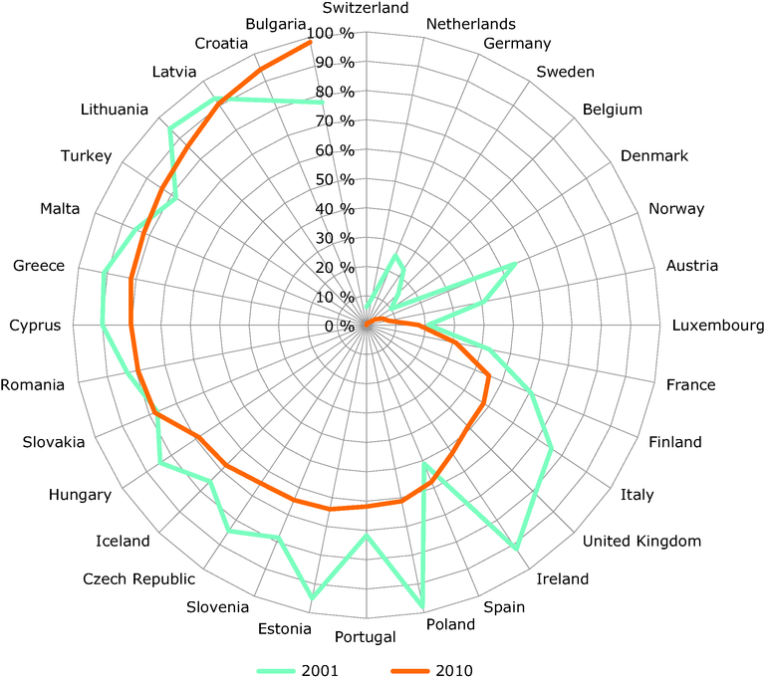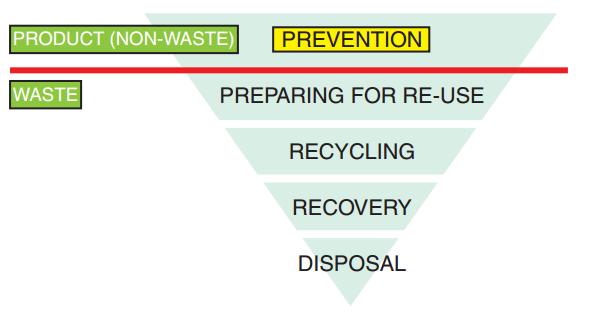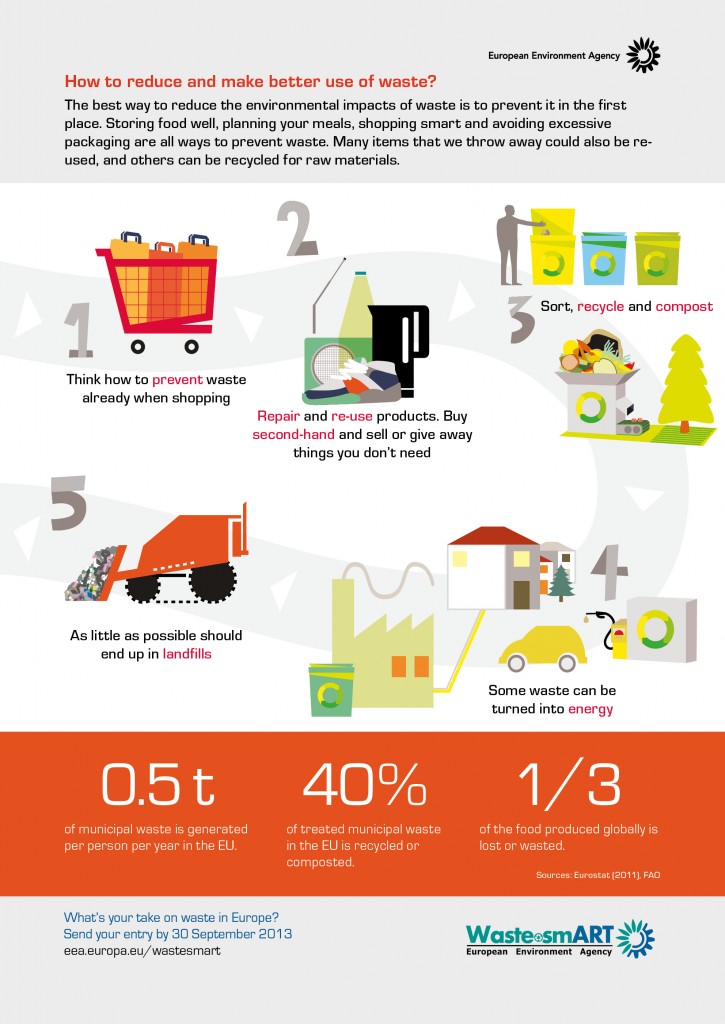Introduction
Consumerism has in a great extent urged us to constantly replace the old with the new. Things that are still intact and function perfectly will soon find themselves in the rubbish bin, leading to an ever increasing amount of waste generated every year. In Hong Kong, the three landfills are running out of space. Finding new ways to deal with waste is more urgent than ever. This series of waste management will introduce waste management in the European Union (EU) in general and individual practices in different EU member states. Could Hong Kong learn something from them?
Macro level: Waste management policy in the EU
Composed of 28 European countries, the EU has formulated various guidelines of waste management for its member states to follow. These guidelines are mostly introduced in the name of “directives” which define certain common goals. All member states should adhere to these goals but are given the flexibility to carry out different practices according to the state’s situation (e.g. wealth, population, etc.). Below we will first give a brief description of some key EU directives concerning waste management; then we will proceed to individual case studies of EU member states. This way, we hope to strike a balance between theory and practice.
Waste Framework Directive (Directive 2008/98/EC)
This directive provides the overall framework of the EU waste management policy. Below are the main principles:
- Waste should be managed in a way without harming the environment and posing threats to human health.
- Noise and odour nuisance should be avoided when dealing with waste.
- Waste prevention is the first priority, followed by preparing for reuse, recycling and recovery. Disposal is considered only as a last resort.
- Polluter-pays principle should be adhered to.
- Producers are liable for the entire life cycle of their products (so called extended producer responsibility).
Landfill sites in Europe must observe the strict rules set by the EU. Human health and the environment should be protected by avoiding the negative consequences of landfills caused by collection, transport, storage, treatment and disposal of waste as far as possible. All landfills that are not up to these standards should be closed by 16 July 2009 at the latest. Otherwise, the European Commission could hold member states responsible before the European Court of Justice.
Waste of electrical and electronic equipment (Directive 2002/96/EC)
Waste of electrical and electronic equipment (WEEE) contains toxic elements which will certainly cause harm to the environment if not treated properly. At the same time, WEEE also contains precious metals; disposing them would be a waste. The EU has therefore requested manufacturers of WEEE to recollect and recycle their products. The target is to increase the recycling rate of WEEE to 85% by 2020.
Batteries (Directive 2006/66/EC)
The European Union has set strict environmental and safety regulations on batteries. Battery manufacturers have to ensure that their product contains no more than 0.0005% of mercury and 0.002% of cadmium. They also have the obligation to recollect and recycle used batteries (whether they are rechargeable or not).
Suggested questions
- What chemical elements are there in a battery?
End of life vehicles (Directive 2000/53/EC)
Since 2003 it has been forbidden in the EU to use mercury, hexavalent chromium, cadmium and lead for vehicle production. The EU has set a target of increasing the recycling rate of end-of-life vehicles to 85% by 2015.
Others: EU reducing food waste
Do you know the difference between “use by date” and “best before date”? Until now, all perishable food, such as milk products and meat, sold in the EU has to carry a “use by date” label. Consuming it after the use by date is not recommended at all as it may cause harm to health (e.g. food poisoning). For non-perishable food, e.g. biscuits and rice, a “best before date” label is necessary. Consuming it after the best before date does not cause health problems, though the texture, smell and color of the food may not be of the same high standards as it used to be.
Many European consumers are perplexed about the difference, thus throwing away unnecessarily a lot of still edible non-perishable food. To reduce food waste, the EU has proposed to exclude some durable non-perishable food, such as spaghetti and coffee, from the “best before date” sticker; this way, it is believed that consumers, deemed capable of judging food quality by themselves, will be spared from the confusion. So far, the EU proposal has gained the support of Austria, Denmark, Germany, Luxembourg, Sweden and the Netherlands. The aim is to reduce food waste by half by 2020.
Read more
Waste management in European countries
Public environmental awareness, government policy and technological skills; these and other factors determine a country’s effectiveness to deal with its waste. Take Europe as an example, Nordic countries and part of those in Western Europe perform better than their counterparts in Southern and Eastern Europe (see below).

Municipal waste recycling rates in 32 European countries, 2001 and 2010; Source: European Environment Agency Report No 2/2013

Municipal waste landfilling rates in 32 European countries, 2001 and 2010; Source: European Environment Agency Report No 2/2013
Suggested questions
- Which five countries have the highest recycling rates?
- Which five countries have the lowest landfilling rates?



